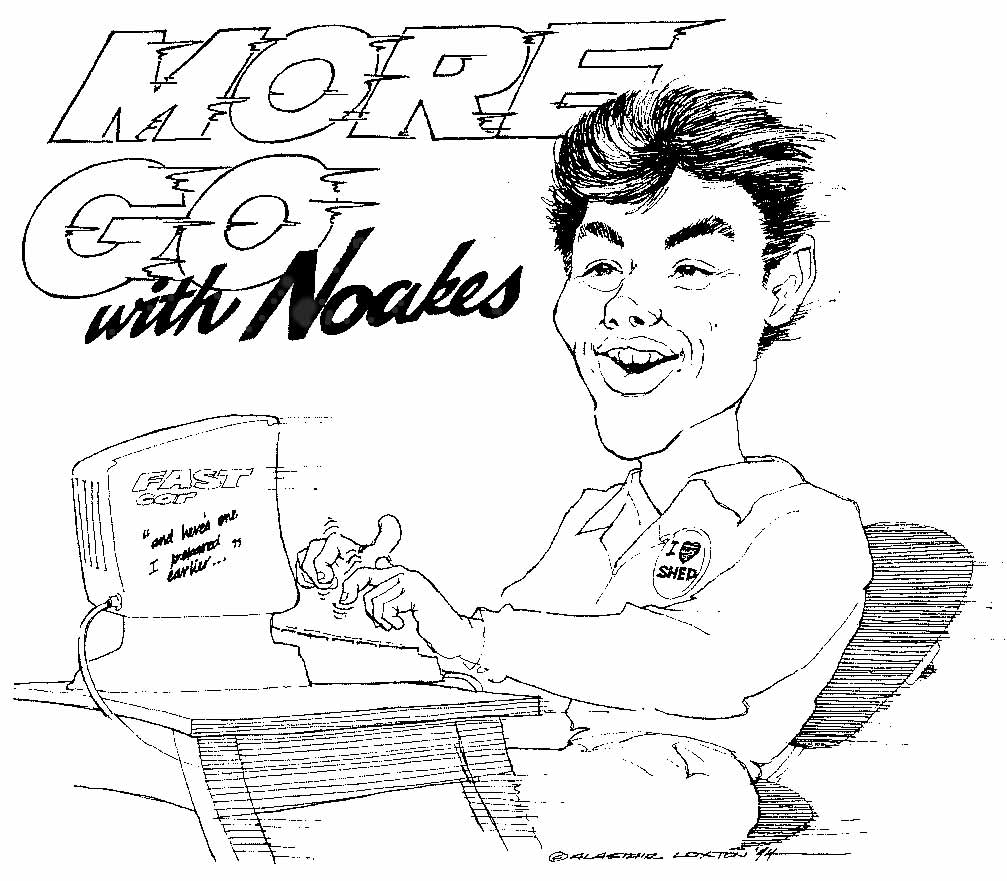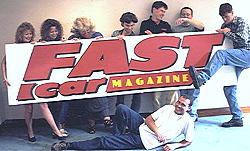I don't remember it myself, but I'm told that the first word I ever said was 'car'. I haven't talked about much else since. I grew up in the village of Romsley, to the south of Birmingham in central England. At 18 I went to Loughborough University to do a degree in Automotive Engineering – the plan being that it might lead to an interesting motor industry job, and if it didn't it might help me become a motoring writer. I was sponsored by Ford, and worked for the company in Brentwood, Basildon, Swansea and Dunton in the 'sandwich' year of my degree course in 1990/91.
Early freelance
Though the opportunity was there start climbing Ford's greasy pole, I thought better of it and instead started freelancing for car magazines. The first was Car Design and Technology: at Loughborough I'd written to them asking for a staff job, and editor Anthony Curtis suggested instead that I write some articles for them as a freelance. Sadly the only story I did for CD&T never appeared, because the publishing company folded.
But encouraged by that small beginning, I started freelancing for other car magazines – notably the shoestring Jalopy and the fine old journal Practical Motorist in what turned out to be its twilight years. I also worked for Car Mechanics, 4x4 Magazine (another title that would soon disappear) the Evening News paper in Worcester and the Post Office's senior citizens magazine, Active Life.

On the staff: Fast Car
In 1994 I joined Fast Car magazine as a Staff Writer. I was hired to strengthen the magazine's technical content, at a time when Fast Car was highly regarded for its technical articles and product tests. So I spent a lot of time testing aftermarket exhaust systems and the like. One of the highlights was one of the most thorough tests ever of aftermarket air filters, organised by me and carried out by MIRA using proper scientific methods. Another was going to see veteran Vauxhall tuner Bill Blydenstein: I'd been told he wasn't worth talking to because he never explained how he achieved his results. But I got him to open up about how he did it, and wrote a story on Blydenstein's 'secrets' of engine tuning...
I also ran the magazine's technical advice section Agony and had my own column for a while, called 'More Go... With Noakes' (headed up by Alastair Loxton's 'speeding desk' cartoon). I doubt any of this will make sense unless you grew up watching children's TV in the 1970s.
Within a year of joining the magazine I'd been promoted to Technical Editor, and went on to be Deputy Editor running the magazine on a day-to-day basis while the editor was working on other projects. I learned a great deal about the magazine production process and how to create a good product.
After two years with Fast Car I moved across to a new magazine from the same publishing company, Retro. The magazine for 'old cars with attitude' turned out to be ahead of its time, and a year later I led its relaunch as the more all-encompassing Classics Magazine. It took three or four years to refine the concept, which really came of age when the magazine was revamped in 2001.
By then I had been invited to join the Guild of Motoring Writers, the premier group of motoring journalists in the UK and I'd been promoted Editor in Chief of Classics, at the same time developing a new internet magazine called It's on the Net. Later I was involved with the launch of a Fast Car special called The Guide, and the relaunch of Fast Bikes. Not that I knew anything about bikes – I got involved because I knew about magazines. But nobody could quite define what my role was, so on the flannel panel I ended up being called 'General Dude'.
 Some of my colleagues from that era would go on to achieve great things: my first editor, Danny Morris (on the floor, left) became a publishing industry managing director; Ian Strachan (giving Danny a good kicking in the pic) wrote motoring stories for The Sun before moving on to a motor industry job; David Roberts (black shirt in the pic) and Charlotte Blight are established freelance journalists; Melissa Moorhead, the wonderful art editor who made so many of the magazines I worked on look so good, went on to do the same thing for IPC's Ideal Home; Andrew Charman, also now freelance, became chairman of the Southern Group of Motoring Writers and now writes about cars and heritage railways.
Some of my colleagues from that era would go on to achieve great things: my first editor, Danny Morris (on the floor, left) became a publishing industry managing director; Ian Strachan (giving Danny a good kicking in the pic) wrote motoring stories for The Sun before moving on to a motor industry job; David Roberts (black shirt in the pic) and Charlotte Blight are established freelance journalists; Melissa Moorhead, the wonderful art editor who made so many of the magazines I worked on look so good, went on to do the same thing for IPC's Ideal Home; Andrew Charman, also now freelance, became chairman of the Southern Group of Motoring Writers and now writes about cars and heritage railways.

Classics team focusses on the serious business of a portrait shoot. We got it together in the end - though not for long. From left: deputy editor Clive White, me and technical editor Ben Hardcastle.
Freelance again
By the end of 2002 I was keen to spend less of my time being a manager and more of it writing, and I went back to freelancing. By then I'd already made contact with The Crowood Press and had begun work on Mercedes SL - The Complete Story. Soon after I was offered the chance to write The Ultimate History of Aston Martin, and more book projects have followed.
I continued to write for Classics and for It's on the Net, until the latter was hived off to a different arm of its publishing company and never seen again. Since then I've written for CAR, Auto Express, Classic & Sports Car, Classic Cars, Classic Car Weekly, Pistonheads.com and many others.
In 2006 I took up a post at Coventry University, teaching on the unique Automotive Journalism MA course. Working with wannabe motoring writers is fascinating because it forces me to constantly re-evaluate what I do and how I do it. Some colleagues said there would never be enough jobs for all the course graduates, but the reality is that most people who complete the course get jobs in motoring journalism, motoring PR or the motor industry.
But working at Coventry remains a part-time activity, and I still spend most of my time doing what I most enjoy: writing about cars.
In 2007 Haynes published Ford Cosworth DFV: The Inside Story of F1's Greatest Engine which at the end of the year was awarded the Guild of Motoring Writers' Timo Makinen Trophy.
Being a motoring writer is more of a paid hobby than a job. It's a petrolhead's dream. How else would you be able to talk to World Champion drivers, ride in a two-seater F1 car, interview designers and engineers, get invited to launches in interesting places and drive all sorts of fascinating cars? And with the motor car and the practice of journalism both going through a period of far-reaching change, it's more exciting than ever.
